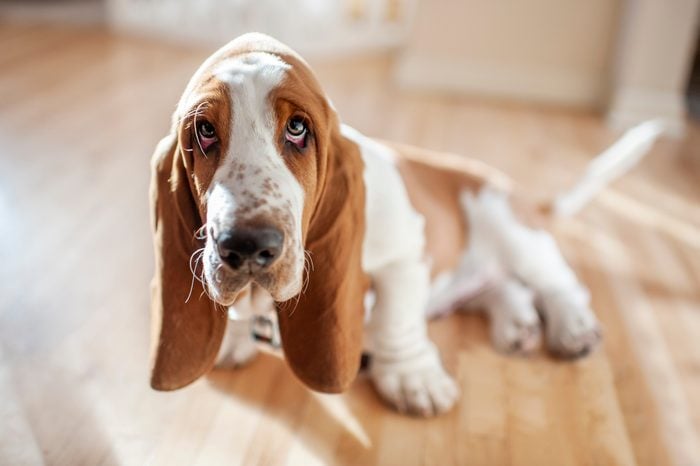
We’re all ears
There are some cute dog breeds out there, and by “some,” we mean “all.” And yet there’s just something about oversize ears that makes pups extra adorable, no matter how big (or small) the rest of their body may be. From floppy-eared bassets and beagles to pointy-eared French bulldogs and Ibizan hounds, dogs with big ears come in all shapes and sizes.
Why do some dogs have big ears?
But why exactly do some dogs have jumbo ears? It has to do with how dogs evolved once they started living with humans. “The dogs morphed into different forms over the years because we found that dogs built one way have a skill that dogs built another way don’t have,” says Patricia Craige Trotter, a longtime dog breeder and dog show judge. “Humans bred their dogs to have the skills they needed.”
Some sought out dogs with big, pointy ears because they believed they would have better hearing abilities. Others demanded dogs with long, floppy ears because they were reputed to be better at tracking. (Their ears supposedly “stirred up” the scent as they dragged along the ground.) Are those theories true? It’s hard to say. “There might be some truth to it, but we don’t have the data to back it up,” says Dayna Dreger, PhD, a senior staff scientist with the National Institutes of Health’s Dog Genome Project. And in some cases, it might be that dog breeders just liked the way their dogs looked with big ears. “It could be an aesthetic thing,” says Dreger. “Not everything is functional in dog breeds.”
Dog breeds with big ears
Ahead, get the lowdown on over a dozen dogs with big ears, including some of the most popular breeds around. You’ll find more than cute photos (though you’ll definitely get plenty of those!). Reader’s Digest talked to five dog experts with a range of expertise to find out which breeds have the biggest ears, plus key information about these lovable pups.
Get Reader’s Digest’s Read Up newsletter for more pets, humor, travel, tech and fun facts all week long.
About the experts
Reviewed for accuracy by: Caroline Coile, PhD, an award-winning journalist specializing in canine breeds, health and science. She’s the author of 34 books, including Barron’s Encyclopedia of Dog Breeds. |
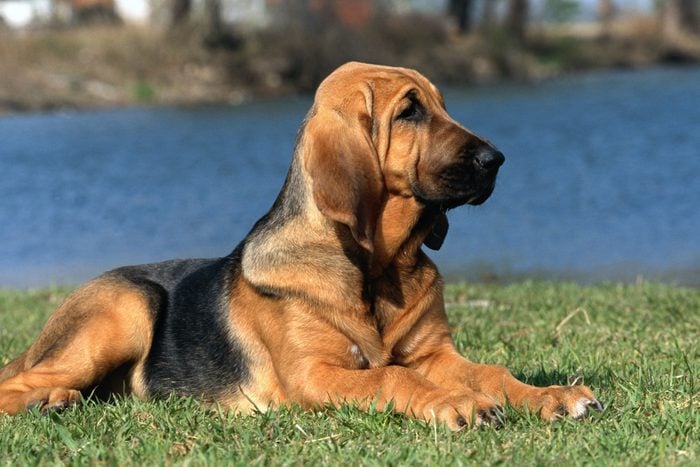
Bloodhound
With its large, droopy ears and big, sagging eyes, the bloodhound might look like the Eeyore of the dog world. But this breed isn’t down about life! These dogs are legendary scenthounds that can trace their tracking talents all the way back to the Middle Ages. “The lore with scenthounds is that when their head is down, their ears form a little cone shape, and it channels the scent into their nose,” says Dreger. Bloodhounds can be stubborn, but they are also known for being affectionate and patient, making them a great dog breed for kids.
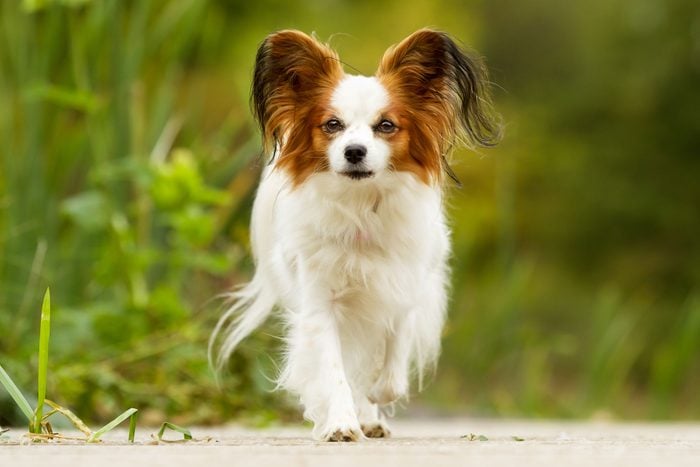
Papillon
Come on, how adorable is that face?! This toy dog breed with wide, fluffy ears is as fierce as it is elegant. Its name hints at its appearance: Papillon means “butterfly” in French. “Papillons have ears that can be erect, resembling the wings of a butterfly,” says Jerry Klein, DVM, the chief veterinary officer of the American Kennel Club. “But the breed also comes in a drop-ear variety called the Phalene.” These big-eared sweeties are known for being calm, outgoing and affectionate.

Beagle
Like their larger scenthound cousins, beagles are excellent hunters, thanks in part to those velvety flop ears. “Dogs with long, floppy ears are able to capture additional particles of a scent, which may otherwise have gone unnoticed, making them great hunting dogs,” says Jamie Ruden, the founder of Dog Spotted. Since they were bred to hunt in packs, beagles love to be around other dogs (and humans), and they’re known for being extremely friendly and easygoing.
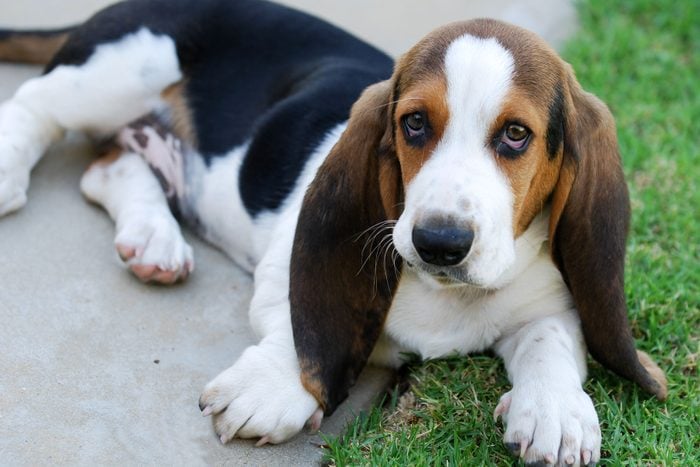
Basset hound
Basset hounds are instantly recognizable to dog lovers everywhere, thanks to their nearly ground-brushing ears. Of all the floppy-eared breeds, “basset hounds have the biggest ears relative to the size of the dog,” says Dr. Klein. Though short-legged and low to the ground, bassets are powerful dogs: They have a heavy bone structure, huge paws and immense strength. They’re tenacious when they want something, but they can also be devoted, kid-friendly pets.
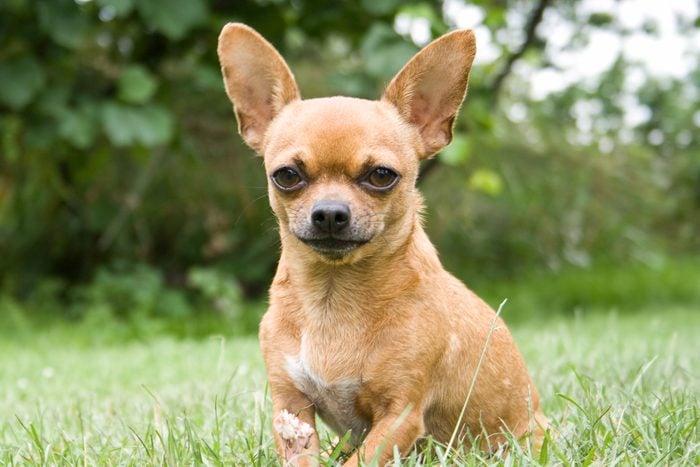
Chihuahua
These purse dogs are native to Mexico and have been around since ancient times. As for those ears? They’re as big as the breed’s personality. Chihuahuas may be teensy in size, but they give off major big-dog attitude. Fortunately, they are also eminently loyal, charming and playful.
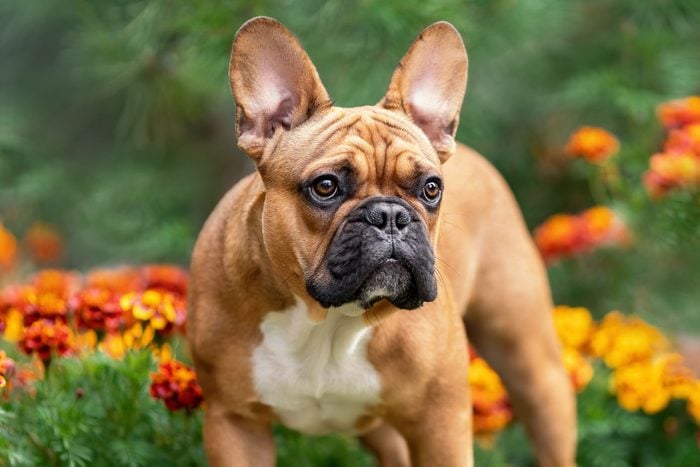
French bulldog
Need more evidence that dogs with big ears are hard to resist? Just check out the French bulldog. “Frenchies have big bat ears, and they’re the most popular dog in the country right now,” says Trotter. Unlike other tiny pups (ahem, Chihuahuas), they don’t bark much, which makes them ideal for apartment living. And while they do need lots of attention from their humans, they make sweet, patient and social pets.
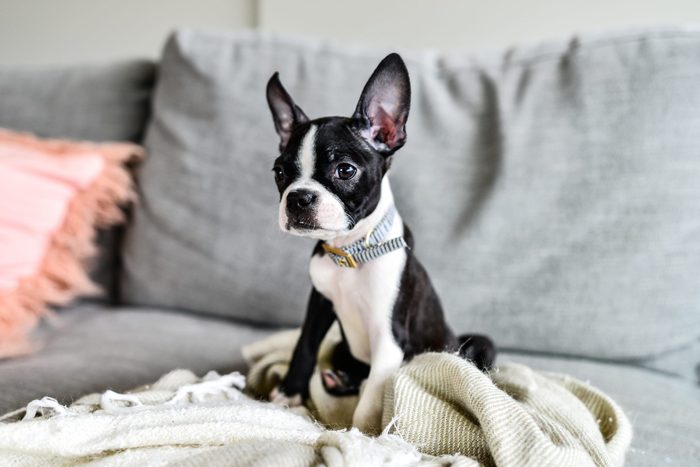
Boston terrier
Boston terriers look forever dashing, thanks to their tuxedo-like coloring. Aside from their very alert ears, their standout features include a compact size, small tail and short muzzle. They’re also whip-smart and affectionate. These are people-loving dogs with a knack for comedy—and if you don’t believe us, just wait until you meet a silly Boston.
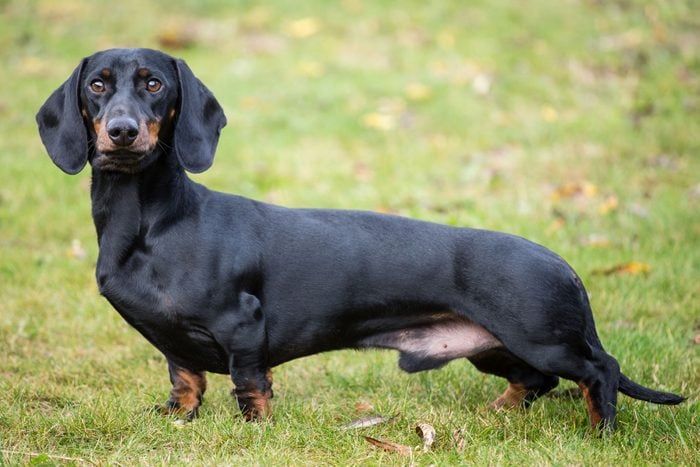
Dachshund
Did somebody say hot dog? Dachshunds are tiny but mighty. These energetic little guys are clever, devoted to their humans and always up for adventure. Plus, with their big-dog bark and vigilance, they make great watchdogs. They are also one of the longest-living dog breeds.
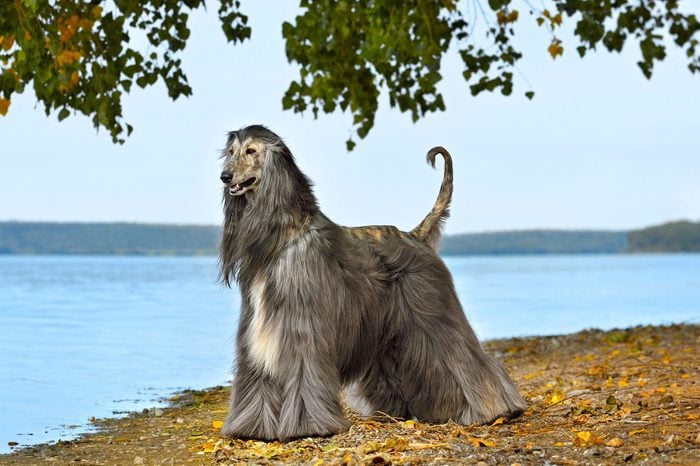
Afghan hound
Have you ever seen more luscious locks? Many of us don’t even look this good after a professional blowout. But while Afghan hounds’ long hair may be strikingly beautiful, it served a greater purpose in the breed’s past, protecting pups from the harsh mountain climate where they were originally used.
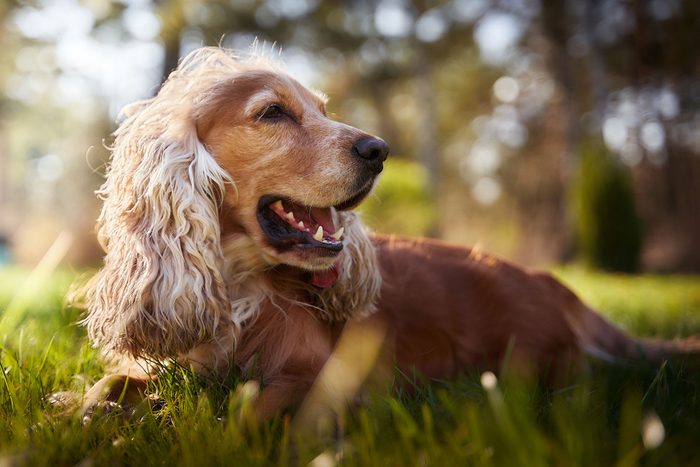
Cocker spaniel
Cocker spaniels are one of the most popular canine companions, and not just because they’re adorable dogs with big ears. They are eager to play, get along great with kids and are easily trained. Plus, their soft fur just screams, “pet me!” As for those beautiful flowing ears? They’re not unique to Cockers; all spaniels have large ears. That said, while they are big, they may not be quite as big as they sometimes look. “All that silky hair makes them look bigger than they are,” says Trotter.
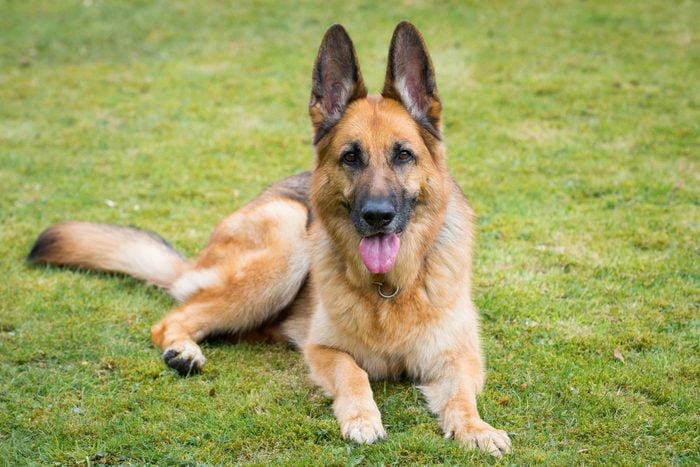
German shepherd
You may know the German shepherd as a muscular, large and agile German dog breed, but it’s so much more than that. Shepherds are known for being loyal and courageous companions—which is why they’re so often enlisted for police and military work. And many believe that their standout ears help them keep tabs on their surrounding at all times. “They have less fur and ear flaps obstructing sounds,” says Ruden.
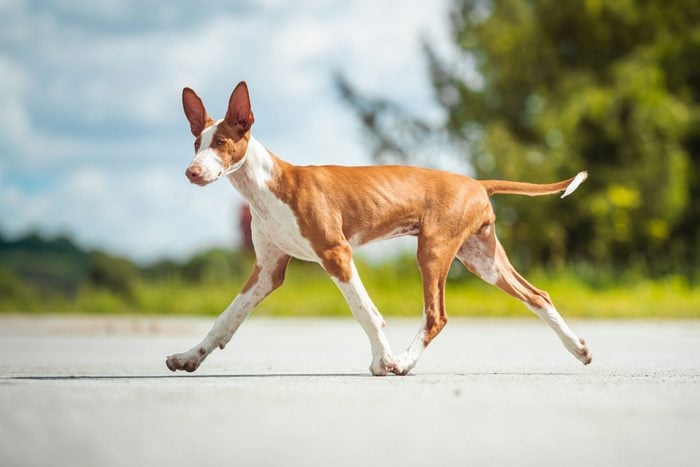
Ibizan hound
Of all the dogs with stand-up ears, Ibizans’ are some of the biggest. Just don’t expect that to mean they will listen to you. “The joke among Ibizan owners is ‘all ears, no hears,'” says Dreger. “They’ve got big old radar ears, but they are notoriously independent!” Still, the athletic breed is also known for being even-tempered and good with kids.
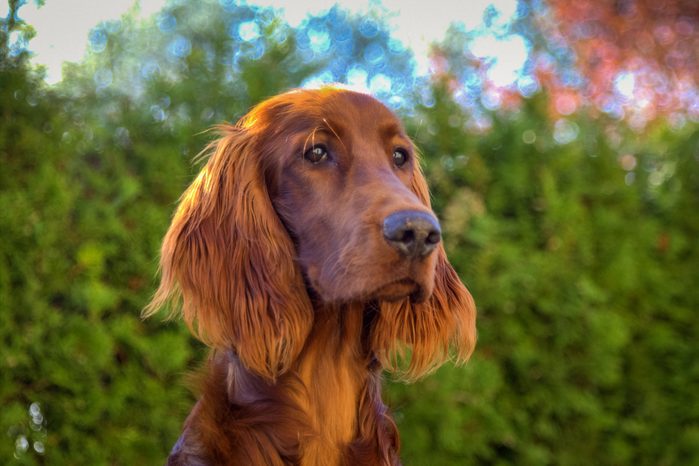
Irish setter
The Irish setter is known for its grace, beauty and swiftness—and a stunning reddish coat. Smart and extroverted, they have charmed pet owners for over 200 years. If yours is an active family, consider bringing home this high-spirited and playful pup.
Why trust us
At Reader’s Digest, we’re committed to producing high-quality content by writers with expertise and experience in their field in consultation with relevant, qualified experts. We rely on reputable primary sources, including government and professional organizations and academic institutions, as well as our writers’ personal experiences where appropriate. Here, Caroline Coile, PhD, an award-winning journalist specializing in canine breeds, health and science, gave this piece a rigorous review to ensure that all information is accurate and offers the best possible advice to readers. We verify all facts and data, back them with credible sourcing and revisit them over time to ensure they remain accurate and up to date. Read more about our team, our contributors and our editorial policies.
Sources:
- Patricia Craige Trotter, dog show judge and author of Born to Win, Breed to Succeed; phone interview, Jan. 31, 2024
- Dayna L. Dreger, PhD, senior staff scientist in the Cancer Genetics and Comparative Genomics Branch of the National Institutes of Health’s National Human Genome Research Institute and a researcher on the Dog Genome Project; phone interview, Jan. 29, 2024
- Jerry Klein, DVM, emergency veterinarian with over 35 years of experience, chief veterinary officer of the American Kennel Club and emergency department head emeritus of Med Vet Chicago; email interview, Jan. 31, 2024
- Jamie Ruden, founder of Dog Spotted; interviewed July 2022
- Brandi Munden, vice president of communications for the American Kennel Club; email interview, Jan. 31, 2024
- American Kennel Club: “Dog Breeds”
